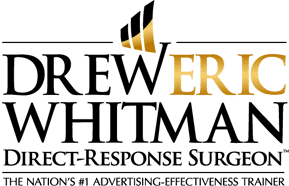
Hi gang…
In my seminars I often say, “People don’t buy in reality until you first cause them to buy in their minds.”
In other words, if they can’t envision a successful purchase and use of your product in their heads, they’ll never move their body (hand) to the point of pulling out their wallet or clicking on your payment link. Makes sense, right?
Enter: Mental Movies and storytelling. The power of storytelling lies in its ability to engage consumers on a deep psychological level. Research has shown that when individuals are exposed to captivating stories, their brains enter a state of “narrative transportation.”
Interesting term, right?
This phenomenon involves the activation of empathy and mental imagery, mental movies, leading them to form a strong emotional connection with the story and its characters. Especially if the main character is them!
Multiple studies have demonstrated the persuasive impact of narrative transportation. You see, when consumers are engrossed in your story, their resistance to persuasion lowers. This lets you “insert” your messages without triggering their skepticism or resistance—or at least less of it. In fact, a survey revealed that an overwhelming 92% of consumers prefer ads that feel like stories. This preference underscores the power of storytelling in capturing and retaining audience attention.
Building Brand Loyalty and Converting Skeptics
By tapping your prospects’ emotions, storytelling creates memorable experiences that leave lasting impressions. For instance, luxury brands craft narratives that highlight exclusivity… status aspirations… and the pursuit of uniqueness. (Very powerful.) This builds trust and increases the likelihood of their customers becoming loyal advocates for their brand.
Storytelling also holds the key to converting skeptics into believers. By carefully crafting narratives that address objections and tap into your prospects’ underlying desires, you can overcome resistance and engage them on a deeper level.
Check out these six examples:
1) Health and Wellness Products:
Right Way: You present a story where a person struggled with chronic pain but discovered relief through a natural, holistic solution. The narrative focuses on the individual’s journey to better health, highlighting the product’s benefits and the transformation it brought to their life.
Wrong Way: Presenting a dry, technical explanation of your product’s ingredients and features without any emotional connection. Neglecting the human element and failing to engage your audience’s emotions.
2) Food and Beverage:
Right Way: You share a story that transports viewers to a picturesque vineyard, showcasing the dedication and passion of the winemakers. Emphasize the heritage, craftsmanship, and unique flavor profiles of the wines, enticing consumers to experience the brand’s exceptional offerings.
Wrong Way: Merely listing your wine’s characteristics and awards without evoking a sense of pleasure or the sensory experience of savoring the wine. Missing the opportunity to create an emotional connection with the audience.
3) Travel and Tourism:
Right Way: Your craft a narrative that takes potential travelers on a virtual journey, immersing them in the sights, sounds, and culture of a dream destination. Showcasing authentic experiences, local encounters, and highlighting the transformative impact of travel on personal growth and self-discovery.
Wrong Way: Providing a straightforward itinerary with a list of destinations and activities, devoid of any personal stories or emotional connection. Failing to capture the wanderlust and desire for exploration that fuels travelers’ aspirations.
4) Fashion and Apparel
Right Way: Your share the story of a fashion designer who overcame adversity to create a successful brand, emphasizing their unique design philosophy and attention to detail. The narrative evokes the brand’s philosophy, inspiring your prospects to become a part of your journey.
Wrong Way: Simply showcasing a catalog of clothing items without a deeper narrative or purpose. Neglecting to communicate your brand’s values, craftsmanship, and the emotional appeal of your products.
5) Technology and Gadgets:
Right Way: You develop a story that focuses on how the latest technological innovation has transformed people’s lives, making their daily routines more convenient, efficient, and enjoyable. Highlighting relatable scenarios and the positive impact of the technology on buyers’ productivity and overall well-being.
Wrong Way: Presenting a product-centric approach, bombarding your audience with technical specifications and jargon without emphasizing its practical applications or benefits in everyday life. (Y-A-W-N!)
6) Luxury Goods:
Right Way: You craft a colorful narrative that delves into the rich heritage and craftsmanship behind your brand’s luxurious offerings. You emphasize the exclusivity, sophistication, and status associated with your products, while illustrating the aspirational lifestyle they represent.
Wrong Way: Merely showcasing your products without conveying your brand’s unique story or the emotional allure of luxury. Failing to connect with your consumers on a deeper level and differentiate yourself from your competitors.
It’s a fact: Storytelling and installing mental movies are powerful marketing tools that can engage your prospects on a deep psychological level. By tapping into their emotions, they envision themselves using your products before they spend a penny… and they create memorable “experiences” that help convert them into buyers. It also helps build brand loyalty and convert skeptics into believers.
So… look at your current sales copy and see if what you’re doing falls more into the RIGHT or the WRONG category! And, as always, if you need help, contact me!
